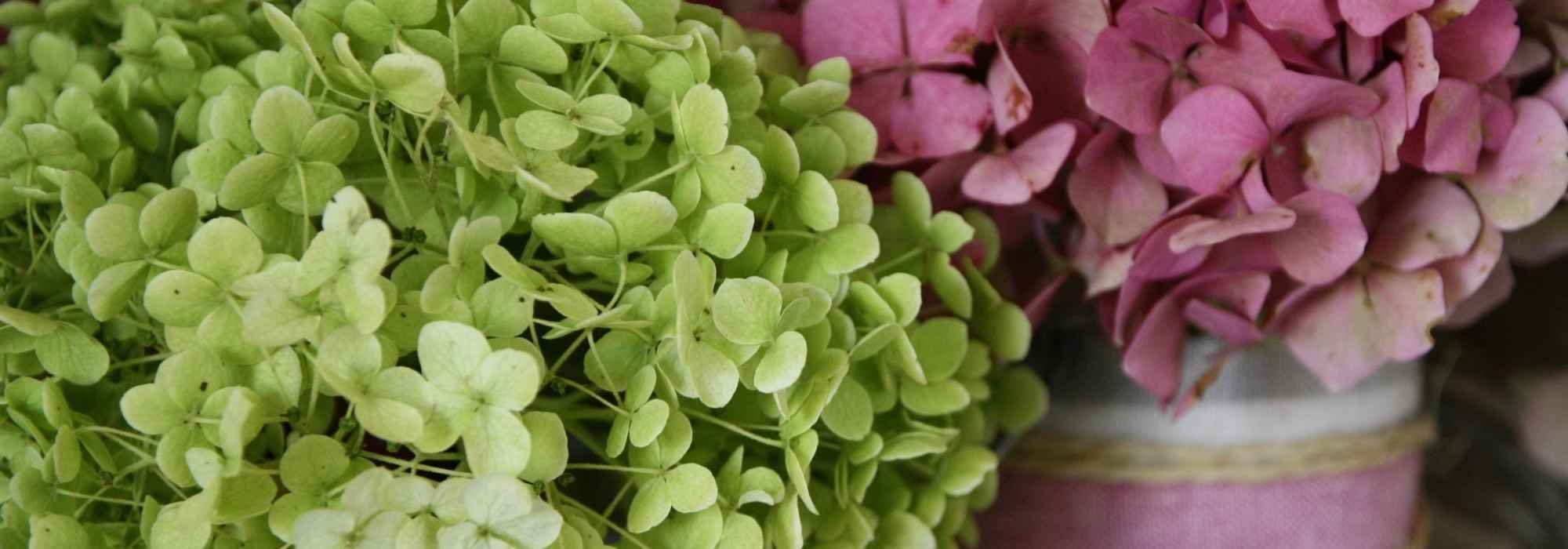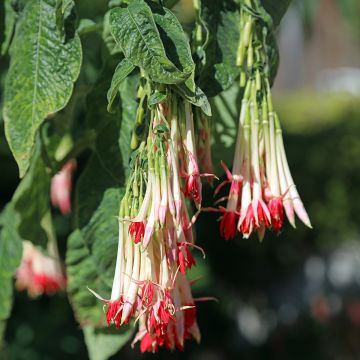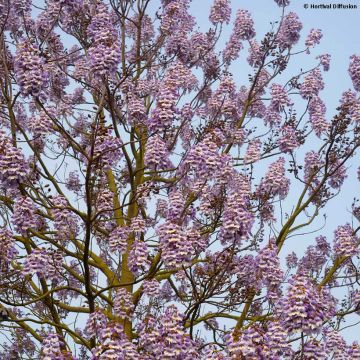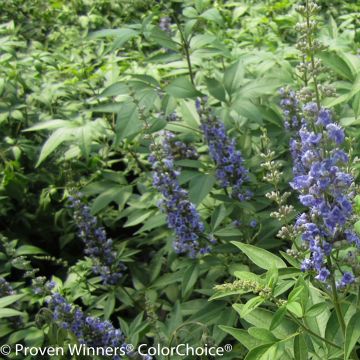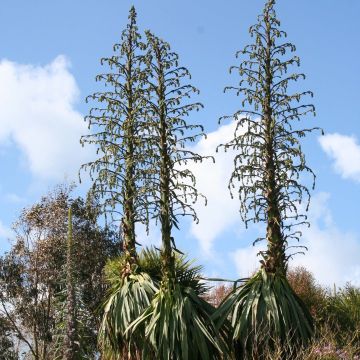

Hortensia - Hydrangea macrophylla Schloss Wackerbarth


Hydrangea macrophylla Schloss Wackerbarth


Hortensia - Hydrangea macrophylla Schloss Wackerbarth


Hortensia - Hydrangea macrophylla Schloss Wackerbarth
Hydrangea macrophylla Schloss Wackerbarth
Hydrangea macrophylla Schloss Wackerbarth
Bigleaf Hydrangea, French Hydrangea
Beautiful young plant with lovely well-developed green leaves, watered immediately. I am looking forward to the beautiful flowering.
Béatrice, 09/03/2022
Special offer!
Receive a €20 voucher for any order over €90 (excluding delivery costs, credit notes, and plastic-free options)!
1- Add your favorite plants to your cart.
2- Once you have reached €90, confirm your order (you can even choose the delivery date!).
3- As soon as your order is shipped, you will receive an email containing your voucher code, valid for 3 months (90 days).
Your voucher is unique and can only be used once, for any order with a minimum value of €20, excluding delivery costs.
Can be combined with other current offers, non-divisible and non-refundable.
Home or relay delivery (depending on size and destination)
Schedule delivery date,
and select date in basket
This plant carries a 24 months recovery warranty
More information
We guarantee the quality of our plants for a full growing cycle, and will replace at our expense any plant that fails to recover under normal climatic and planting conditions.

Would this plant suit my garden?
Set up your Plantfit profile →
Description
The Hydrangea macrophylla Schloss Wackerbarth is a captivating plant known for its unusual and vibrant colours. Its beautiful inflorescences, which take on a slightly flattened ball shape, start appearing in July. The flowers have a thick texture and are initially apple green but gradually turn pink-red or dark red as they mature. Even after the flowers have faded, they still look fascinating with their paper-like texture and extraordinary colours, complementing the foliage with a slightly reddish tint in autumn. This compact hydrangea has flexible and ramified stems. It is a versatile plant that can be grown in pots, used as a cut flower, or planted in shaded massifs along with bushes and perennials in similar colours.
The 'Schloss Wackerbarth' plant comes from Germany and was grown from a wild and unidentified seed. In 2014, it won an award for its unique flowering. It belongs to the Hydrangea family and is a hardy bush that grows from 1m (3 ft 4 in) to 1.20m (3 ft 11 in) in all directions. The plant has flexible branches that are well-ramified and produce many small flowers in July. These flowers are carried by blue-violet petioles and form dense bouquets. The flowers are bright apple-green pompons with a small bud in the centre that changes colour. The flower heads become bicolour, bright pink or magenta red, striped with lime green. Then, they evolve towards pink-violet, with red around the central bud, which becomes bluish before fading in early autumn. The plant has bright green, deciduous foliage, and the leaves are opposite, with a minimum of ten centimetres in length. They are single, ovate to elliptical, dentate, and end in a sharp point.
Hydrangeas are known for their excellent hardiness and can brighten up the north side of houses. This plant is easy to grow and suitable for borders and hedges. It is particularly suitable for container culture, prominently displayed on terraces or near entrances. Although this plant doesn't like limestone, it is not strictly an ericaceous plant. You can pair it with fuchsias magellanica, annual impatiens, or plant bulbs with spring flowers in front of their round silhouette. You can enjoy the magical flowers of 'Schloss Wackerbarth' for a long time in the garden or at home in bouquets.
Hydrangea macrophylla Schloss Wackerbarth in pictures




Plant habit
Flowering
Foliage
Botanical data
Hydrangea
macrophylla
Schloss Wackerbarth
Hydrangeaceae
Bigleaf Hydrangea, French Hydrangea
Cultivar or hybrid
Planting and care
Choose either spring or early autumn to plant hydrangea macrophylla Schloss Wackerbarth. Pick a spot that's a little shaded, like against an east-facing wall or in the north. Protect the plant from cold and drying winds. While it doesn't need ericaceous soil, it does better in deep, fresh, well-drained, and relatively fertile soil. You can add a good base fertiliser before planting.
If the soil is dry at the wall's base, plant the root ball at least 30-40 cm (11.8-15.7 in) away from it. Add lots of well-rotted compost to help the soil stay fresh. This plant is tough and can be planted even in a cold region.
To prune, remove faded flowers on the first bud or the pair of buds below. Cut back the oldest stems to a quarter or third at the base for a mature plant to encourage new shoots. Prune every year in March and April.
Planting period
Intended location
Care
Planting & care advice
-
, onOrder confirmed
Reply from on Promesse de fleurs
Similar products
Haven't found what you were looking for?
Hardiness is the lowest winter temperature a plant can endure without suffering serious damage or even dying. However, hardiness is affected by location (a sheltered area, such as a patio), protection (winter cover) and soil type (hardiness is improved by well-drained soil).

Photo Sharing Terms & Conditions
In order to encourage gardeners to interact and share their experiences, Promesse de fleurs offers various media enabling content to be uploaded onto its Site - in particular via the ‘Photo sharing’ module.
The User agrees to refrain from:
- Posting any content that is illegal, prejudicial, insulting, racist, inciteful to hatred, revisionist, contrary to public decency, that infringes on privacy or on the privacy rights of third parties, in particular the publicity rights of persons and goods, intellectual property rights, or the right to privacy.
- Submitting content on behalf of a third party;
- Impersonate the identity of a third party and/or publish any personal information about a third party;
In general, the User undertakes to refrain from any unethical behaviour.
All Content (in particular text, comments, files, images, photos, videos, creative works, etc.), which may be subject to property or intellectual property rights, image or other private rights, shall remain the property of the User, subject to the limited rights granted by the terms of the licence granted by Promesse de fleurs as stated below. Users are at liberty to publish or not to publish such Content on the Site, notably via the ‘Photo Sharing’ facility, and accept that this Content shall be made public and freely accessible, notably on the Internet.
Users further acknowledge, undertake to have ,and guarantee that they hold all necessary rights and permissions to publish such material on the Site, in particular with regard to the legislation in force pertaining to any privacy, property, intellectual property, image, or contractual rights, or rights of any other nature. By publishing such Content on the Site, Users acknowledge accepting full liability as publishers of the Content within the meaning of the law, and grant Promesse de fleurs, free of charge, an inclusive, worldwide licence for the said Content for the entire duration of its publication, including all reproduction, representation, up/downloading, displaying, performing, transmission, and storage rights.
Users also grant permission for their name to be linked to the Content and accept that this link may not always be made available.
By engaging in posting material, Users consent to their Content becoming automatically accessible on the Internet, in particular on other sites and/or blogs and/or web pages of the Promesse de fleurs site, including in particular social pages and the Promesse de fleurs catalogue.
Users may secure the removal of entrusted content free of charge by issuing a simple request via our contact form.
The flowering period indicated on our website applies to countries and regions located in USDA zone 8 (France, the United Kingdom, Ireland, the Netherlands, etc.)
It will vary according to where you live:
- In zones 9 to 10 (Italy, Spain, Greece, etc.), flowering will occur about 2 to 4 weeks earlier.
- In zones 6 to 7 (Germany, Poland, Slovenia, and lower mountainous regions), flowering will be delayed by 2 to 3 weeks.
- In zone 5 (Central Europe, Scandinavia), blooming will be delayed by 3 to 5 weeks.
In temperate climates, pruning of spring-flowering shrubs (forsythia, spireas, etc.) should be done just after flowering.
Pruning of summer-flowering shrubs (Indian Lilac, Perovskia, etc.) can be done in winter or spring.
In cold regions as well as with frost-sensitive plants, avoid pruning too early when severe frosts may still occur.
The planting period indicated on our website applies to countries and regions located in USDA zone 8 (France, United Kingdom, Ireland, Netherlands).
It will vary according to where you live:
- In Mediterranean zones (Marseille, Madrid, Milan, etc.), autumn and winter are the best planting periods.
- In continental zones (Strasbourg, Munich, Vienna, etc.), delay planting by 2 to 3 weeks in spring and bring it forward by 2 to 4 weeks in autumn.
- In mountainous regions (the Alps, Pyrenees, Carpathians, etc.), it is best to plant in late spring (May-June) or late summer (August-September).
The harvesting period indicated on our website applies to countries and regions in USDA zone 8 (France, England, Ireland, the Netherlands).
In colder areas (Scandinavia, Poland, Austria...) fruit and vegetable harvests are likely to be delayed by 3-4 weeks.
In warmer areas (Italy, Spain, Greece, etc.), harvesting will probably take place earlier, depending on weather conditions.
The sowing periods indicated on our website apply to countries and regions within USDA Zone 8 (France, UK, Ireland, Netherlands).
In colder areas (Scandinavia, Poland, Austria...), delay any outdoor sowing by 3-4 weeks, or sow under glass.
In warmer climes (Italy, Spain, Greece, etc.), bring outdoor sowing forward by a few weeks.





































